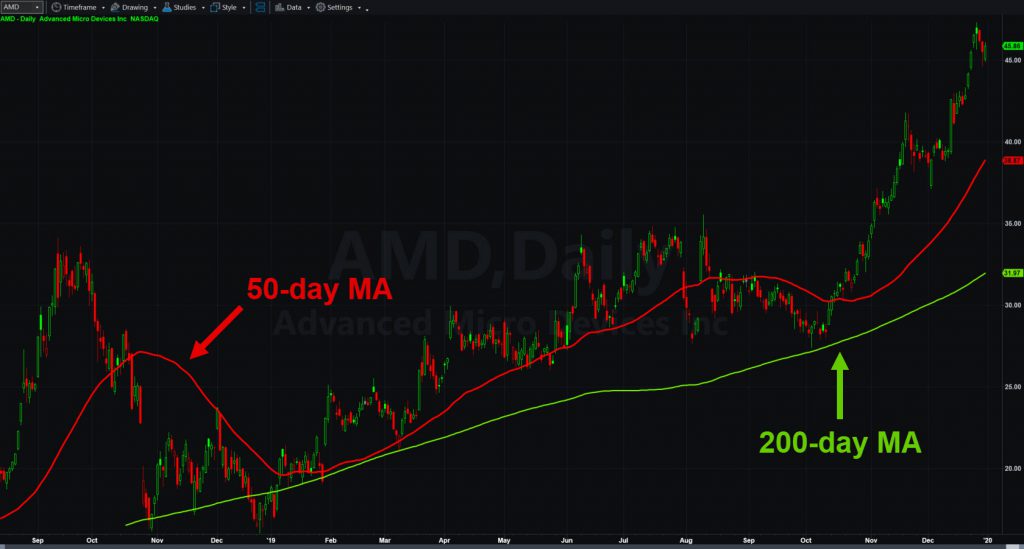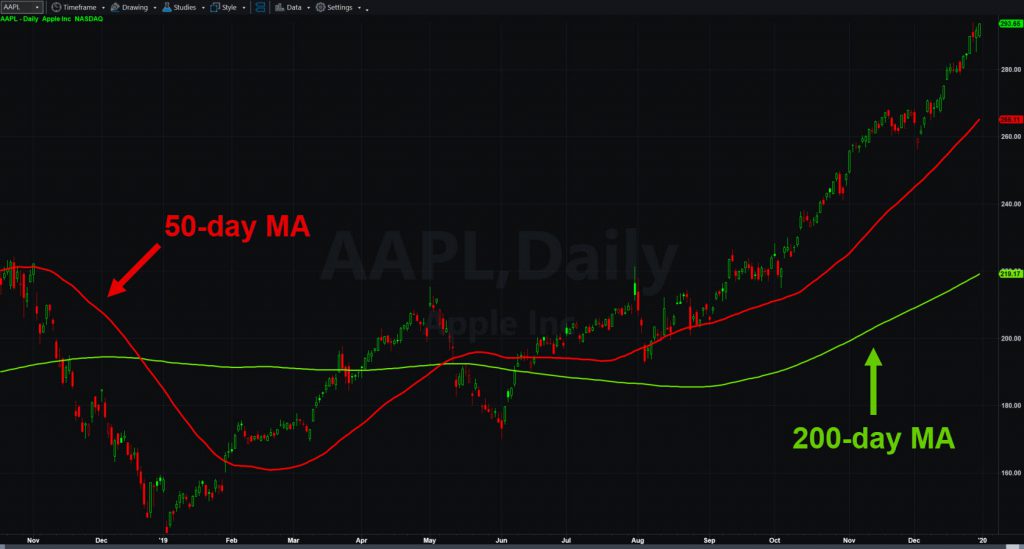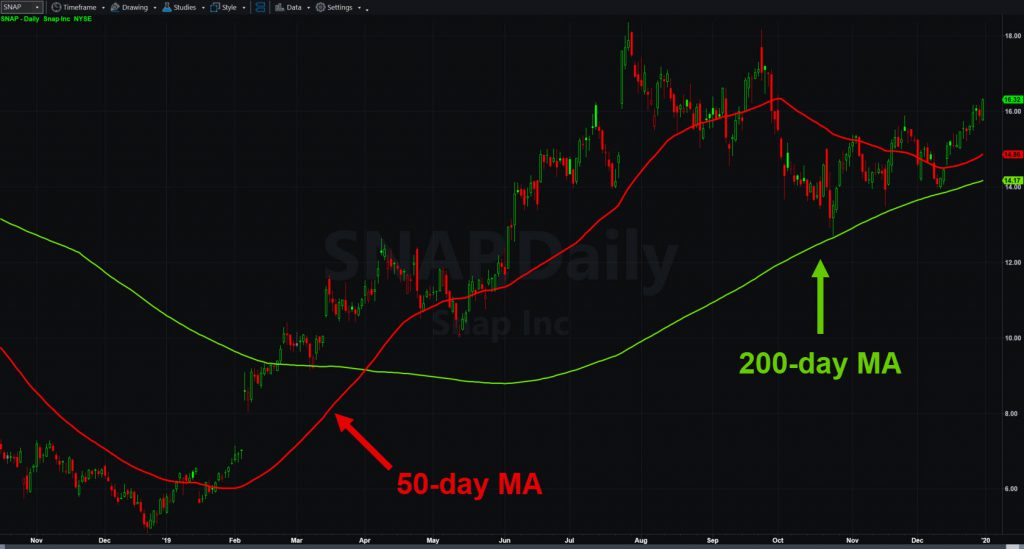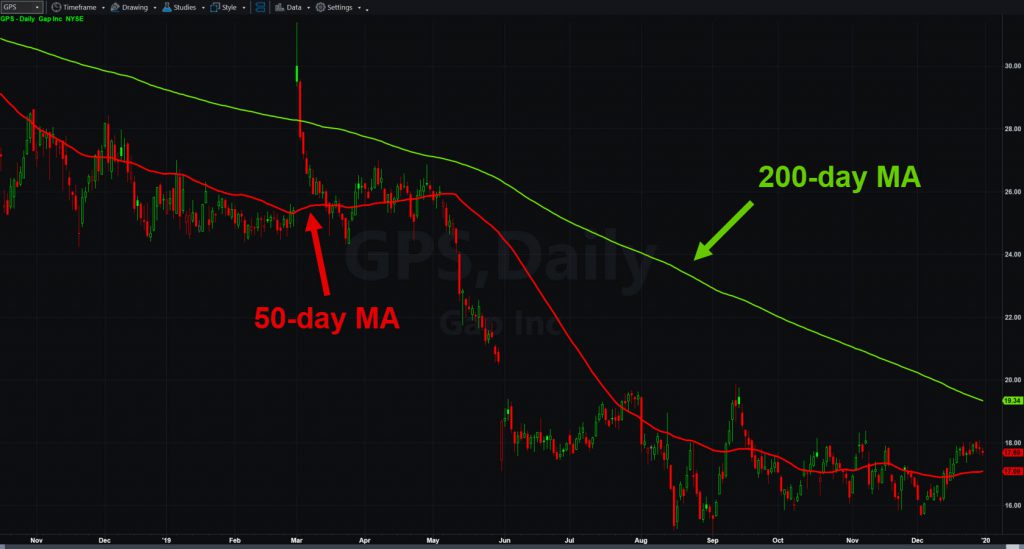Last year was dominated by technology trades as investors returned to their favorite corner of the stock market. Let’s review some of the biggest movers.
First of all, semiconductors ripped higher as orders rebounded. The industry may also remain in focus this year as investors look to growth of 5G networking.
Advanced Micro Devices (AMD), only added to the S&P 500 in March 2017, was its biggest gainer for the second straight year. AMD rose 148 percent thanks to gaming, data centers and production troubles at rival Intel (INTC).
Including AMD, five of the index’s 10 best performers last year were chip stocks. Others included Lam Research (LRCX), KLA (KLAC), Qorvo (QRVO) and Applied Materials (AMAT).

Apple Reaches a Trillion
Apple (AAPL) was another huge story in 2019. While it only ranked 11th in the S&P 500 (up 86 percent), the smart phone giant became the first company with a trillion-dollar capitalization. A shift toward services, which enjoy higher multiples than gadgets, helped fuel the move. Share buybacks and strong iPhone demand also helped.
Interestingly, Tim Cook’s firm wasn’t alone in the 13-digit club. Satya Nadella also steered Microsoft (MSFT) across that major threshold. Will Sundar Pichai, recently installed as CEO of Alphabet (GOOGL), follow suit in 2020?
Streaming video was another big trend in tech last year. Roku (ROKU) more than quadrupled in value, and at one point was up almost sixfold. It was also TradeStation’s third-busiest symbol in 2019, despite not being a member of the S&P 500 or Nasdaq-100.
Target Hits the Mark
Last year also saw traditional retailers successfully adapt to e-commerce. Wal-Mart Stores (WMT) definitely held its own, but the real standout was Target (TGT).

Digital orders, combined with in-store pickups, helped keep shoppers in its brick-and-mortar locations. That let CEO Brian Cornell beat estimates each of the four times he announced results. TGT’s 94 percent move ranked it No. 5 in the S&P 500.
Elon Musk was another chief executive who saw his stock shoot to new highs. Tesla (TSLA) struggled for most of the year, only to fix its manufacturing problems in October. Musk followed that achievement by breaking into China’s massive, smog-choked market. Has the visionary car maker finally gained traction?
Solar Shines
Speaking of environmentally friendly stocks, 2019 was also a banner year for solar energy. Several things seemed to be happening.
First, utility-scale facilities have become a reality. That, combined with rooftop demand, is driving orders for new panels. Next, Chinese factories have stopped dumping cheap photovoltaic cells into the U.S. market.
Enphase Energy (ENPH) was the most prominent name in the industry, gaining 452 percent.
Here are some other tech stocks with noteworthy gains in 2019:
- Snap (SNAP): The social-media company rose 196 percent after platform enhancements and market-share gains drove hopes of a turnaround.
- Sea (SE): Little known in the U.S., the Singapore-based firm is a powerhouse of esports videogaming in Asia. It rose more than 250 percent last year.
- Xerox (XRX) is up 87 percent after successfully shifting toward business services and moving away from legacy products.

Housing Probes Old Highs
Housing was the strongest industry group in 2019 outside of the technology space. It benefited from major drop in mortgage rates (down 1.5 percentage points) and a lack of homes for sale. Housing starts and building permits are now back to the highest levels since 2007.
Forecasters at Fannie Mae are looking for activity to increase even more in the New Year because the strong labor market is giving Americans the cash to buy homes. They’re also predicting a shift toward single-family construction and away from the apartments that dominated the last decade.
Still, housing might need an asterisk because 2019 did little more than retrace the previous year’s selloff. The big question going forward isn’t so much construction. It’s whether builders can still turn profits with lower price points and higher costs for labor and materials.
Energy and Cannabis Struggle
Even with the S&P 500 hitting new highs in 2019, some areas of the market struggled.
Energy was the worst-performing major sector. It was negative for most of the year because of too much supply and trade worries.
Global stocks also trailed the broader market as investors worried about President Trump’s trade war against China. Like energy, they rallied in the fourth quarter as the White House and Beijing moved toward an agreement. Value hunters may remain focused on both energy and global stocks in 2020 if the geopolitical situation improves further.

Cannabis stocks took a beating last year. The group flew higher in 2018 as legalization swept Canada and parts of the U.S., but then bled lower as investors questioned their multiples and long-term business prospects.
Finally, 2019 was also a record year for retail-store closures — despite strong consumer spending. More than 9,300 locations got shuttered as firms like Sears, Forever 21 and Destination Maternity went bankrupt, according to Coresight.
That overall trend of declining foot traffic kept pressure on other traditional retailers including Gap (GPS), Macy’s (M), Kohl’s (KSS) and L Brands (LB). How long will they remain in the S&P 500?
In conclusion, the S&P 500 just had its biggest yearly gain since 2013 as fears of global crisis faded. Now as we begin a new decade, expectations seem to be turning toward 5G networking and the possibility of stronger economic growth. Trillion-dollar valuations could also become more common.


























